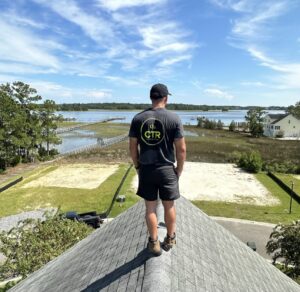
Unveiling the Mystery: Top 5 Ways to Diagnose a Roof Leak Like a Pro
Unlock the secrets of roof leak detection with expert tips, including visual inspection, hose testing, and checking flashing. Safeguard your home from potential damage today.

A leaky roof can be a homeowner’s worst nightmare, causing not only structural damage but also potential health hazards. Identifying the source of a roof leak promptly is crucial to prevent further deterioration and costly repairs. In this comprehensive guide, we’ll explore the top five ways to diagnose a roof leak like a seasoned professional, ensuring your home stays dry and secure.
The first step in detecting a roof leak is a thorough visual inspection. Begin by examining your roof from the ground, looking for any obvious signs of damage such as missing or damaged shingles, warped flashing, or debris buildup in valleys. Climb up to the attic and inspect the underside of the roof for water stains, mold, or damp spots. Shine a flashlight on the roof decking to catch any signs of daylight streaming through, indicating potential gaps or holes.
Pro Tip: Perform this inspection at least twice a year, ideally in the spring and fall, to catch any issues early on.

Water stains on ceilings or walls are clear indicators of a roof leak. Examine each room for discoloration, peeling paint, or bulging patches on the walls and ceilings. Keep in mind that water can travel horizontally along beams and pipes, so the actual source of the leak may not be directly above the stain.
When you identify a water stain, trace its location back to the roof, noting the distance from exterior walls and any potential entry points. This information will be valuable when you decide to inspect the roof from the outside.
Pro Tip: If you notice water stains, act promptly to prevent further damage. A quick response can save you money in the long run by avoiding extensive repairs.

For a more targeted approach to identifying the leak source, conduct a hose test. Enlist a helper and start by selecting a section of the roof where the leak may be occurring. Use a garden hose to simulate rainfall, directing water onto specific areas of the roof while your assistant monitors the interior for any signs of leakage.
Begin with the lowermost areas and work your way up, taking note of the time it takes for leaks to appear. This method helps you pinpoint the exact location of the leak and is especially effective for identifying subtle issues like small punctures or worn-out flashing.
Pro Tip: Perform the hose test on a sunny day to ensure that the roof is dry before starting, making it easier to spot leaks as they occur.
Flashing and sealants play a crucial role in preventing water penetration around vents, chimneys, skylights, and other roof penetrations. Over time, these components may degrade, crack, or peel away, creating potential entry points for water.
During your roof inspection, pay close attention to the condition of flashing and sealants. Look for visible signs of damage or deterioration, such as rust, corrosion, or gaps. If you spot any issues, consider resealing or replacing the affected areas to ensure a watertight seal.
Pro Tip: Regular maintenance of flashing and sealants can extend the lifespan of your roof and prevent leaks. Include this information in your routine home maintenance checklist.
Clogged or damaged gutters can contribute to roof leaks by causing water to pool on the roof or overflow, leading to water infiltration along the roofline. Regularly inspect gutters and downspouts for debris, leaves, and other obstructions that may impede proper water drainage.
Clean gutters at least twice a year, especially in the fall when leaves are abundant. Additionally, check for any signs of damage to the gutters or downspouts, such as rust, sagging, or loose fasteners. Addressing these issues promptly can help prevent water damage to your roof and the interior of your home.
Pro Tip: Install gutter guards to minimize debris buildup and reduce the frequency of gutter cleaning, ensuring optimal water flow.
A leaky roof is a problem no homeowner wants to face, but early detection is key to minimizing damage. By following these top five ways to diagnose a roof leak, you’ll be equipped to identify and address issues before they escalate. Regular inspections, proactive maintenance, and timely repairs will not only protect your home but also extend the lifespan of your roof.
Remember, a dry and secure home starts with a well-maintained roof. Don’t let a small leak turn into a major headache—take the time to inspect your roof regularly and address any issues promptly. Your home will thank you for it!

Owner, Chucktown Roofing
Brian Surguy, the owner of Chucktown Roofing, is a seasoned roofing professional with a remarkable track record—having replaced over 300 roofs in Charleston. As a trusted Certainteed partner, Brian prioritizes quality and excellence in every roofing project. His wealth of experience positions him as a go-to expert, ensuring clients receive top-notch service and peace of mind for their roofing needs in the Charleston area.

Unlock the secrets of roof leak detection with expert tips, including visual inspection, hose testing, and checking flashing. Safeguard your home from potential damage today.